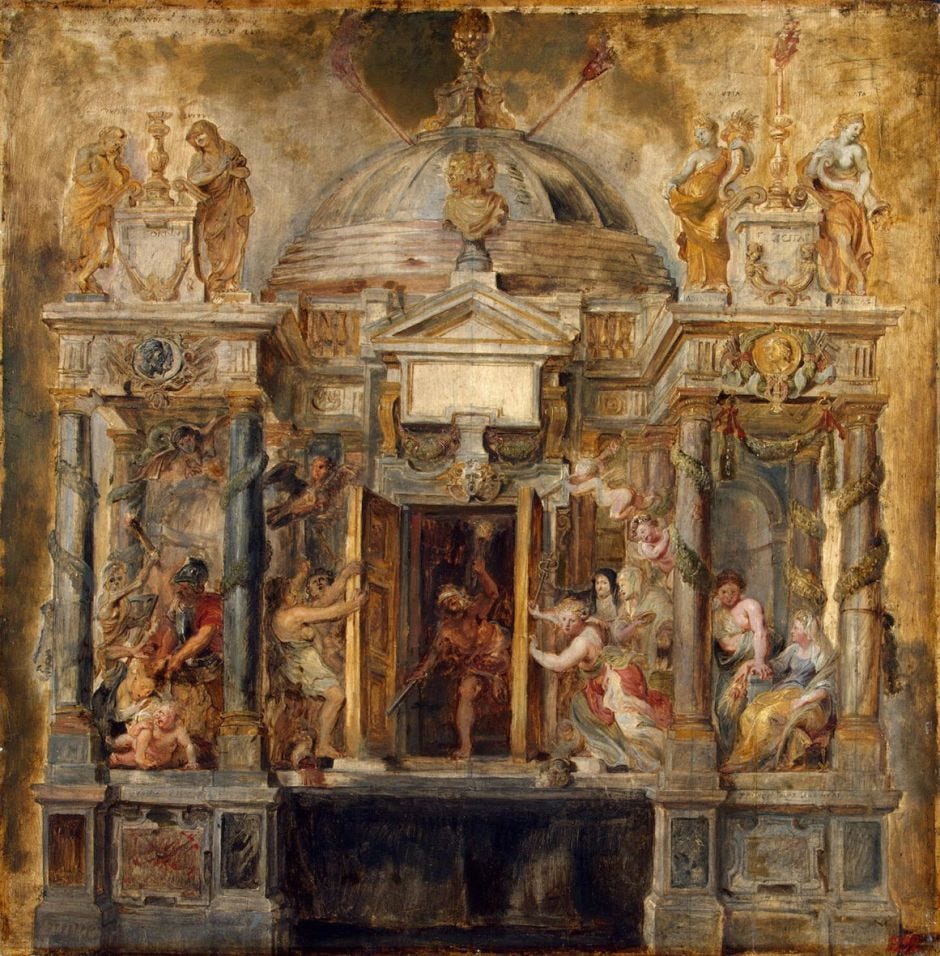Sunday Read: Janus and the bridge between legacy and innovation – #22
Series: "Mythology"
“Mythology” Series:
Format: Each week we present a concise mythological story and draw direct parallels to contemporary AI concepts.
Goal: Highlight how modern technological dilemmas mirror ancient Greek tales, sparking interest about both subjects.
1. Mythological reference
In Roman mythology, Janus is the two-faced god of transitions, doorways, and time. With one face looking toward the past and the other toward the future, Janus symbolizes the duality of beginnings and endings. He presides over moments of change—whether at the start of a new year or during critical thresholds—reminding us that every transition requires both reflection on what has been and anticipation for what is to come.
2. Parallel with AI
Bridging legacy and innovation
In today’s fast-evolving AI landscape, practitioners face a constant tension between maintaining legacy systems and adopting cutting-edge solutions. Much like Janus’s dual gaze, AI leaders must simultaneously look backward to preserve proven, stable infrastructures and forward to embrace new technologies such as deep learning, edge computing, and cloud-native architectures.
Legacy systems provide continuity, reliability, and an established foundation; however, they can also hinder rapid innovation if left unmodified.
Modern solutions promise enhanced performance, scalability, and flexibility—but integrating them with older systems often presents compatibility challenges.
This balancing act echoes Janus’s role as the guardian of transitions. As Adrienne Mayor explores in Gods and Robots: Myths, Machines, and Ancient Dreams of Technology, ancient myths remind us that progress is built on the wisdom of the past. Similarly, technical texts such as Martin Kleppmann’s Designing Data-Intensive Applications emphasize that “elegant systems are those that integrate the old with the new, ensuring backward compatibility without stifling innovation.”
Lesson: embracing dual perspectives
By adopting a Janus-like perspective, organizations can:
Preserve stability through careful maintenance and integration of legacy systems.
Drive innovation by strategically incorporating modern AI technologies.
Ensure smooth transitions through thoughtful architecture design that values both historical robustness and future adaptability.
This approach not only safeguards past investments but also paves the way for sustainable innovation—a harmony of tradition and progress.
3. Reflections and questions to consider
Balancing legacy and innovation
How can we ensure that maintaining legacy systems does not impede the adoption of newer, more agile technologies?
Integration challenges
What strategies can be implemented to seamlessly bridge the gap between established infrastructures and modern AI solutions?
Risk management
How do we safeguard against vulnerabilities that may arise from integrating old and new systems?
Future-proofing
In what ways can we design our AI architectures to be both backward compatible and ready for future innovations?
4. References
Iliad
(Epic narrative that, among its many themes, underscores the interplay of legacy and innovation in the ancient world.)Odyssey
(Homer’s classic, which, through its journeys and transformations, mirrors the challenges of transitions.)Adrienne Mayor, Gods and Robots: Myths, Machines, and Ancient Dreams of Technology
(Explores how ancient myths can inform our understanding of modern technological dilemmas.)Martin Kleppmann, Designing Data-Intensive Applications
(Discusses the importance of integrating old and new systems to create robust, scalable architectures.)Technical documentation on legacy system integration and modern AI frameworks
(Provides practical insights into strategies for balancing backward compatibility with innovation.)




